 |
 |
| |
|
| |
|
|
| |
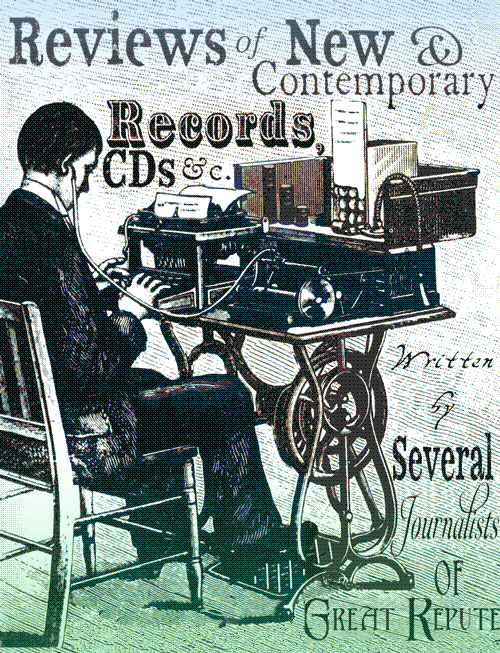 |
|
| = April 2016 = |
|
|
| Paper Leaves |
| Rusalnaia |
| Sons of the Void |
| Juju |
| Smile Down Upon Us |
| Mats Gustaffson |
| Blues 18, 19, 20 |
| New Planet Trampoline |
| C Joynes & NJ Davis |
| Psychedelic Suburbia |
| Band Photographs |
| Beatles Gear |
| the Chemistry Set |
| Sendelica |
| Paul Roland |
| Black Tempest |
| Wilder Adkins |
| Crystal Jacqueline |
| July |
| |
| |
| |
| |
|

Home |
VARIOUS ARTISTS - PAPER LEAVES
(LP from the Terrascope)
Terrascope, that august organ for discerning music lovers, has turned 25 and it's online presence celebrates its tenth birthday also. In over 3 dozen editions, Terrascope has covered "folk, freakbeat and psychedelia, to Krautrock, prog, punk, free jazz, electronica - and nearly every genre in between" and has become one of the most respected independent music journals in the world.
To celebrate the anniversaries, the Terrascope crew, headed by editor Phil McMullen, have put together 'Paper Leaves' and, as befits it's reputation, it is a thoughtfully curated compilation of some of the very best artists working today.
Black Tempest (aka the rather talented Stephen Bradbury) kicks off proceedings with a 'Terrescopula Tempestua', a beautiful track reminiscent of Tangerine Dream at their finest; lush swathes of synth, and velvety drones. It has the kosmische feel of a seventies soundtrack about it, again like the aforementioned TD but straying into more experimental territory but never losing the tranquil, meditative quality. Nick Nicely's 'Dance Away' is a slice of classic pop psych with treated vocals sitting stately above a track rooted in the UK sixties psych scene. There is plenty going on in this track; bursts of horns, flashes of electronic trickery and even some hauntological flourishes. As the track nears the end there is some wonderful, understated psych guitar . It is no wonder that the cover blurb refers to Nicely as the “greatest pop star that never was”....a truly psychedelic treat. Dead Sea Apes have provided 'Universal Translator'.... a play on 'Universal Interrogator' from 'Spectral Domain', and is slow building exercise in texture and soundscape. As regular readers will no doubt know, DSA are one of my very fave bands and this track shows exactly why I love ‘em...a slow build dripping with atmosphere, the guitar, with its spaghetti western twang, conjuring visions of the Mojave, arid and sun-baked. When DSA are at the top of their game, they are the masters at creating and moulding soundscapes and this IS them at the top of their game...classic DSA and reason enough to buy this album. White Hills' 'Thermal Head' closes side one and is another track rooted in kosmische...a steady programmed beat underpinning some warbling synths and coruscating psych guitar. It doesn’t have the sturm und drang of some of their psych/space rock material but this is a very effective foray into electronic based krautrock...great stuff indeed.
Side two is opened by Ben Chasny, from Six Organs of Admittance & Comets on Fire. ‘Dead And Rising’ is an acoustic cover of the Wayne Roger’s track that frankly left me speechless.....Chasny’s guitar is peerless and the track is just awesome and not what I was expecting, but I guess that’s the sign of a true visionary artist...the ability to disarm the listener and not constrained by preconceptions or boundaries. The Left Outsides' 'Young Girl Cut Down In Her Prime' is a traditional song beautifully arranged by the band. Alison Cotton’s crystal sharp voice resonates over a simple drone and strings, resulting in a bucolic slice of pastoral folk. It is a luscious treat and I, for one, am going to have to investigate these guys further. Bevis Frond (Nick Saloman) has been involved with Terrascope since the beginning as publisher of the near mythical Ptolomaic Terrascope magazine and has played every Terrastock Festival. ‘Back In The Churchyard’ is classic Frond, those unmistakeable vocals and superlative guitarwork are instantly recognisable and, let's face it, the guy has never put a foot wrong! Album closer 'Pumori' is Bardo Pond doing what Bardo Pond do best...a long track filled with psych guitar over crashing drums and the impassioned vocals of Isobel Sollenberger. It is a gargantuan psych monster full of fat, slow riffs that bring to an end this eclectic cornucopia of top sounds.
'Paper Leaves' is a triumph....a lesson in how to put together a compilation with thought and love. The variety is outstanding and yet all fall neatly under the umbrella of 'psychedelia', whether it be the kosmische electronica of Black Tempest, the folk stylings of The Left Outsides or the out-and-out psych of Bardo Pond. Having given the record several spins, the variety is like the horn of plenty; on every listen there is something new to pick out and enjoy. Kudos to the Terrascope guys for producing a compilation that is gonna be hard to beat this year, and also to the bands for providing the unreleased material that makes this an essential purchase.
(review lifted with kind permission of @luminousgonk over at http://dayzofpurpleandorange.blogspot.co.uk ) |
| |
|
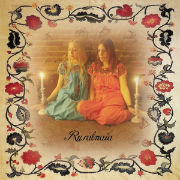
Home |
RUSALNAIA - S/T
LP from FeedingTube records
Originally released on Tony Dale's Camera Obscura label, this magnificent record has finally been given the vinyl release it richly deserves. Limited to 400 copies this is essential listening to anyone with a fondness for music with a Terrascopic flavour. Here is my original review to hopefully whet your appetite, sleeve notes by a certain Phil McMullen as well.
Claiming Jefferson Airplane, Mellow Candle, and The Trees as influences (cor! - Phil) Rusalnaia is so much more than those influences, a pagan ritual for sunny days, the soft contemplative flow of the river or the wind through the willows. Featuring the combined talents of Gillian Chadwick (Ex-Reverie, Woodwose) and Sharron Kraus, the album is rich and varied with the two distinct voices adding a whole level of texture to the pagan folk within.
Opener “The Sailor and The Siren” sets the tone immediately, the pulsing guitar and voices shimmering with mystery, joyous in their closeness. One of my favourite songs is the restless “Shifting Sands”, the lyrical content perfectly mirrored by the arrangements, with an eerie rattle adding a ritualistic air, the song as much a prayer as a folk tale. In fact, there is an air of mystery to the whole album, a flicker of candlelight casting strange shadows over the music. On “Kindling”, the psych-folk spirit is alive and well, the influences heard most strongly, with Producer Greg Weeks, adding some acidic lead work to the tune, one of the albums many highlights. There is a definite sense of legend on the title track (Not surprising considering Rusalnaia is a water nymph that tickles people to death), with the vocals particularly enchanting, the song taking you to the edge of the forest, the darkness within both scary and exhilarating.
With a light and gentle caress, Dandelion Wine” is a gorgeous paean to summer, the arrangement of pipe and cello (courtesy of Margie Wienk) creating a brief splash of sun-lit brilliance. Finally, “Wild Summer” closes the album in magnificent style, a trance inducing pagan prayer to summer that uses a simple four-line lyric as a basis, launching into inner space and traversing the labyrinth, before emerging cleansed and golden at the end.
One of the things I love about this album is the way that every song is your favourite as it is playing and then the next one is even better. I hope my family enjoys it as much as I do, they could be hearing it all summer. (Simon Lewis) |
| |
|

Home
|
SONS OF THE VOID - S/T
JUJU - S/T
(LP/DL from http://www.sunriseoceanbender.com/ )
Featuring David Max (Tadpoles) and Nick Nobody, the debut album from Sons of the Void is a delightful mix of Dream Pop, Psych and Jangle, the blend flecked with touches of surrealism, samples and a quiet lysergic coating.
Favouring melody over volume, the album has a quiet dreamlike quality, with side one opening with a whisper of sound effects before a jangling guitar heralds the beginning of “Leichenblume”, the tune filled with weird noises that float around the melody in a very enticing way. Equally charming, “Don't Forget To Pray” has a trippy ambience created by the droning keys, whilst “Kolliderscope” has a twinkling sequence dancing through it, the tune produced in a way that brings every nuance into focus yet remains soft and dreamy. To end side one, “Absorption” is a mellow piece with lyrics that talk of matter, time and space, one to lie back and float away on, the many layers of sound providing the perfect magic carpet. Over on side two things continue in the same manner with “Hope I Don't Miss” having a warm fluid bass line and a heavier guitar passage in the middle, whilst “A Kick Like That” is a great slice of Psych Pop, with excellent guitar work and a gentle flute wandering though it. To end, “Little Children” takes us back to the jangly guitar that heralded the beginning of the collection rounding of an album that has its own distinctive sonic sound, one that takes a little while to tune into. When you do however you discover a gem of an album that will get regular airtime.
Opening with a meaty bass riff that could be found on a Nine Inch nails album, “Juju” is a collection of tunes that rely on repetition to create their power with Samael” getting right to the point as it drives forward with chanted lyrics and noisy guitar, the bass line glueing it all together before “We Spit On yer grave” takes over, more melodic than its title suggests, a shimmering slice of dream pop with a dark lyrical heart and some great guitar. With a drifting, psychedelic feel “Stars and Sea” slows things down, a beautiful cloud of sound that is easy to get lost in until the track revs up at the end with some space rock guitar riffery. To end the first side “Dance With the Fish” has delicate piano notes laced with strange sounds and strings sounding like the soundtrack to a bizarre black and white movie.
Driven by a sprightly guitar riff, “Sunrise Ocean” has a magnificent groove that will get you moving although the lyrics are again much darker than the tune suggests, with lines like “I'm gonna burn your city and let the fucking sun die” displaying an anger that is missing from the music. Starting quietly with some lyrical piano, “Lost” slowly builds in intensity, the drums creating a hypnotic beat around the piano riff, the lyrics whispered, chanted and repeated, a guitar taking the song into deep space to dance with ancient constellations. With percussion and a throbbing bass, “Bring Em War” closes the album in style, chanted lyrics, heavy guitar and a lysergic cloak of sound, seemingly summing up everything that has gone before, hypnotic, psychedelic and damn good.
Created by Gioele Valenti, this is an epic collection that takes a few listens to fully appreciate as good music generally does. (Simon Lewis) |
| |
|
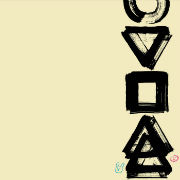 |
SMILE DOWN UPON US – 2
(LP/DL from Bandcamp)
The project of MoomLooo and Keiron Phelan, helped out by various guests including David Sheppard - drums, percussion and acoustic guitar, Jenny Brand - Clarinet, and Katie English - Cello amongst others. Fans of Tunng and Psapp will love this.
'One Feathered Shoal' kicks things off with a narrated Haiku accompanied by a cacophony of bird song, gurgling rivers and jumping fish, with all manner of instruments, mainly acoustic and organic with clarinet and whistles twinkling away on a bed of percussion, a wonderful playful introduction.'Took By Crows' is all strings, synths and percussion which burble throughout, underscored by electric piano and choral washes, gradually joined by clarinet and flute adding a wistful feel with omnipresent crows acawing, Moom opening up her pipes a bit now, a tremendous song. 'Magic Breath' bubbling synths with flutes Moom clearly having fun singing and cooing again joined by clarinet over a percussive arrangement, I am increasingly reminded of the group Psapp as things progress.
'Dance With Silver' starts with acoustic guitar, Jews harp, piano and whistles, there is so much going on but still with plenty of space, Moom joins in with a breathy vocal, glorious melodies rise and fall to wonderful effect over this the longest track on the album. 'Butterfly Morning' written by Richard Gillis starts with a ukulele, plenty of electronics then join in and another haiku like poem is recited, it's all over and done with in two minutes, this song is taken from the Sam Peckinpah film 'The Ballad Of Cable Hogue'.'Gusano's Travels' is a world music tour de force, mad as a box of frogs and very good, a list of numbers being counted down in Polish.
'Dragons Song' has a great fun arrangement, cello, woodwind and percussion weave throughout, sounding effortless yet quite complicated with even the Dragon making an appearance halfway through. Sung by Keiron to oodles of clarinet over a twinkling bedrock. 'Millwall' starts accompanied by cheering crowds as a tropical spectral Can-like beat commences,with Moom wondering why the millwall fans are so misunderstood !, this has a sort of loping reggae vibe about it and is quite summery.
'Powam Song' closes this record in a playful style, with Moom really going for it and singing her heart out. A fine ending to a really delightful record, lots going on but always with plenty of space . The list of the instruments played include organ, pizzicato cello, recorders, electronics, bowed cello, drums, electronic percussion and a range of sounds sourced from Freesound. (Andrew Young)
|
| |
|
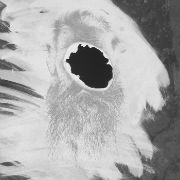
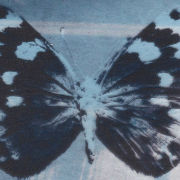
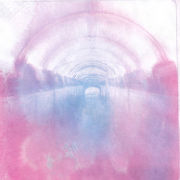
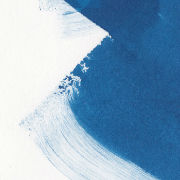
Home |
MATS GUSTAFSSON - PIANO MATING LP/DL
BLUE EIGHTEEN - CHEMIEFASERWERK C40/DL
BLUE NINETEEN - THE LIBRARY OF BABEL C30/DL
BLUE TWENTY - QUASIVIRR C25/DL
(All from: https://bluetapes.bandcamp.com/ )
Experimental and drone ridden, the music on “Piano Mating” was recorded using a Dubreq Pianomate, a device designed to turn your piano into a giant stylophone, but here manipulated without a piano to create writhing outer-space tones and sounds that are microtonal and, at times, nerve jangling. Pressed on clear vinyl, the album contains two long pieces, both of which are long drones that fill the room with an alien ambience and it takes a while to get deep into the sound and discover the variations and textures within. When you do though, the pieces begin to sparkle with a life and vitality of their own, with the first side concentrating on higher pitches whilst side two has a lower ambience giving it a warmer less metallic feel. Not for the casual listener this is music that needs to be listened to as a physical experience at which point it becomes wholly satisfying.
Released as part of an ongoing series of cassettes, Blue Eighteen features two sides of electronic manipulation, crackles, burbles and other strangeness presumably created by Chemiefaserwerk although information is scarce on this subject. Sounding the BBC Radiophonic workshop having a clear out, the music seems to have field recordings mixed in giving the pieces a narrative feel, although the story is up to you and your imagination. Never too harsh, there is a playful element to it all that makes it easy to listen to although it is definitely not easy listening.
Moving on Blue Nineteen features music by Guitarist Shane Parish, Bassist Frank Meadows and Cellist Emmalee Hunnicutt. On this release there is plenty of melody, the music blending traditional folk with a more experimental approach, the resulting tunes haunting and melancholic as heard on “Blind Corners In Wild Dawn”, the excellent opening track. With the Cello adding deep drones to the tunes, there is a real sense of depth to the album, the Bass and Guitar adding twisting melodies and showers of notes to proceedings. Over eight tracks the musicians hold your attention delightfully with “Branching” having a percussive element, whilst “Memory Sea Foam” allows the Cello to shine out. A thoroughly enjoyable release that reveals more layers every time you listen.
One thing I love about these tapes is that each one is different from the previous meaning that Blue Twenty features two long tracks “Choro Tempore” and “Choro Tempore (Piano Version)” with the first track being an eleven minute Prog epic, with heavy guitars, synths etc, the music inventive and energetic sounding a bit like Yes being played by a bunch of Ladbroke Grove freaks, played beautifully but beautifully scruffy around the edges, which is a good thing in my book. Turn to the other side and you have the whole thing again this time for solo piano giving the music a completely different texture, the playing excellently handled by Andre Michel Arraiz-Rivas, who also plays drums and sings on the first side where he is joined by Roberto Rizzo (Synths Vocals) and Chet Martino (Eight – String Bass, Vocals).
There is enough variety and quality on these releases to keep an adventurous music fan satisfied for a good while so head on to the Bandcamp site give them a listen then buy something to ensure ventures such as this continue in the future. (Simon Lewis)
|
| |
|
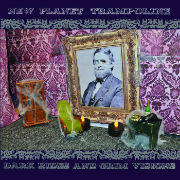
Home |
NEW PLANET TRAMPOLINE - DARK RIDES AND GRIM VISIONS
LP/DL/CD from bandcamp
Just imagine that you took all your favourite Psych albums put them in a bag and gave them a good shake. When you tipped them out again the result may sound like this amazing collection that seems to have been influenced by everyone yet retains a flavour all of its own, the music sprawling, trippy, and beautifully constructed.
Opening with the sound of water and flutes, “There Is Nothing left To Say” sounds like an outtake from Sergeant Pepper covered by the Dukes of Stratosphear, a gorgeous Psych-Pop moment that welcomes you in with clouds of lysergic, shimmering organ and brass accompaniment. Darker in texture, “Grim Visions” walks the line between Psych and Garage with great guitar and plenty more organ the song rocking with energy especially toward the end as it gains momentum. With a West-Coast feel, “Ex-President” flows and jangles from the speakers before “Confidence Man” takes over, A slab of heavy psych that detonates the mind, hypnotic riffing, snarling vocals and a liberal coating of weirdness all topped off with some stunning guitar action, the perfect end to side one.
Taking on a San Francisco hue, “Acts Of Mania” is wreathed in coils of smoke as it floats languidly from the speakers, nine minutes of blissful music, reminding me of HP Lovecraft or Country Joe and the Fish. Much louder, “Pollution” is a strange Garagey affair that would not sound out of place on Pebbles Vol 3 “The Acid Gallery” such is its odd brilliance, the quality maintained for “Birds” an Eastern tinged tune with a kaleidoscopic heart.
I guess most bands would be delighted to have produced a single album chock full of quality tunes, great playing and bags of energy but not New Planet Trampoline, the second album as brilliant as the first with the absolute highlight being the nine minute “Dark Ride” a creeping garage riff at its heart, the tune mean and moody sounding like you always wished The Fuzztones had, all attitude and more magnificent guitar trickery, a tune to get your head nodding with a big smile on your face.
Elsewhere, “This Is The Morning” is a sparkle of dreamy pop, whilst “Nearly Finished Face” begins by sounding like Love with plenty of acidic guitar flashes before it morphs into an early seventies Floyd vibe, the two halves producing a perfect whole. Finally “Haunted As Fuck” leads us out with a merry psych dance, guitar and organ in perfect harmony and all you can do is play the whole damn thing again, well I did anyway as it seems to be glued to the turntable at the moment, something I am not complaining about. (Simon Lewis) |
| |
|
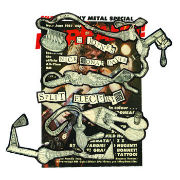
Home |
C JOYNES / NICK JONAH DAVIS - SPLIT ELECTRIC
LP/DL from Thread Recordings
On this fine release, two recognised and excellent guitar players decide to go electric, each producing a series of solo pieces, the guitarists taking it in turns over the course of the album, something which creates contrast allowing you to notice the difference in their playing styles.
Opening things in almost reckless fashion, for an acoustic guitarist, “The Running Board” (CJ) is a fast country blues that benefits greatly from the noisy electric treatment, you keep expecting Captain Beefheart to chime in with some growled surrealism, the piece crackling with life. With a gentler folk influence., “Poa Kichizi” (NJD) shows a delicate touch, the notes ringing out in their electric glory creating a thing of great beauty. As if answering the last piece, “Bold William Taylor” (CJ) is also folk influneced although a droning bass note gives it a darker edge especially with the West-Coast tone of the guitar, Folk and Psychedelia colliding wonderfully. As if to answer the opening blues piece the album continues with “William Sathya” (NJD) a slower blues ripe for evening sunsets and a glass of Jim beam.
More experimental in flavour and quite likely, only possible on an electric guitar, “Endomorph Vs Ectomorph” (CJ) is a slow and moody track showcasing a heavier side, the whole side rounded off with “Sigil Eyes” (NJD) another experimental track, heavy on reverb the notes drifting like dandelion seeds across a darkened room driven by a huge metal fan the whirls languidly in the corner, ending a glorious side of music, the running order beautifully thought out.
Over on side two the fun continues with the jaunty folk sunshine of “St Cloudy Apple Spring” (CJ) kicking things off in fine style before “Corksniffers” Delight” (NJD) floats into a more lysergic world the reverb again employed to perfection, the piece distorted and filled with tension. From here on in until the albums final note, there is plenty more good stuff to be discovered the quality kept high throughout.
Special mention should also go to the sleeve design by Richard Dawson which features the front cover of Kerrang No 1 overlaid with strange designed, an image which seems to work perfectly with the music, for some odd reason, the back cover also adorned with a picture of Kelly Johnson (Girlschool) which can never be a bad thing.
This sat in the review pile for a while before I finally gave it a spin, when I did I cursed myself for playing it the moment it arrived, an album destined to become a lost classic. (Simon Lewis) |
| |
|
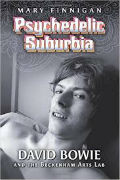
Home |
MARY FINNIGAN - PSYCHEDELIC SUBURBIA: DAVID BOWIE AND THE BECKENHAM ARTS LAB
(Jorvik Press pbk, ISBN 9780986377020)
Shit, the timing of this book’s arrival couldn’t have been better, a publisher’s dream, it appeared the day the world found out that its inspiration, David Bowie had passed away.
However in a weird kind of way this book is not just about Bowie – it’s part autobiography, part reminiscence, part social history, almost a curate’s egg in that it doesn’t quite conform to any of these. Its author Mary Finnigan just happened to move to Beckenham at the time Bowie was beginning to find his feet as a serious artiste there. It’s literally all in the title, Psychedelic Suburbia.
Beckenham is a conurbation in south east London. Back in the 60s it basked in a village atmosphere –hard to believe the capital was only a few miles away – white, predominantly middle class, with none of the racial mix it has nowadays. Bowie though born in Brixton had come of age in nearby Bromley where he’d recently attended art college so no big surprise that he popped up in Foxgrove Road in early 69 squatting with mates, right next door to where the author had recently moved. Indeed Finnigan’s own story is more fascinating than Bowie’s at the time – a single mum with two young kids in tow who’d moved down to London from Manchester – dabbled as a journalist in Fleet Street but had got caught up the irresistible sway of the capital’s late 60s alternative scene.
After a drugs bust and spell in the slammer, Mary ended up in Beckenham and the tome picks up steam as Bowie initiates a relationship with her. She’s soon caught up in Bowie’s world as they hit upon the idea of starting a folk club at the Three Tuns on Beckenham High Street on a Sunday night that slowly morphs into Growth, the Beckenham Arts Lab, a regular gig for a broke DB.
It’s not deliberate but Finnigan – maybe because she never went there - never mentions a key south east London music venue, the Mistral Club (formerly Beckenham Ballroom), located on the bridge by Beckenham Junction Station. Was Bowie just too unknown to get a gig there? It’s never mentioned though the Mistral was for a while a hot venue that booked the likes of the Bonzos, the Pretty Things, Tyrannosaurus Rex, and for one night in February 69 played host to the Moby Grape, who played one of the best shows on their only European tour – but the Mistral is a story for another time.
For me the book works best as a snapshot of what the UK was like in 1969 with the seeds of the 1966/67 London Underground scene branching spectacularly into the suburbs and provinces. Finnigan does a good job in capturing those innocent, heady times when it did seemed to a generation that anything was possible (even if the dark clouds of Altamont and the OZ trial were on the far horizon). That sense of anything is achievable all comes back as she recounts how she and Bowie developed the Sunday night happenings from a rough and ready folk club into a more elaborate and sophisticated incarnation with alternative dance troupes, light shows, and even their own newsletter. I love the para where she observes how overwhelmed they were by the ‘young, long-haired, dope-smoking, acid-dropping, flower children and freaks who’d arrive on their doorstep, frequently carrying assorted musical instruments. Increasingly they came not only from Beckenham but farther afield across the London suburbs – from Orpington, Bromley, Chislehurst, Crystal Palace and Croydon. It wonderfully mirrors Bowie’s own comment at the time, ‘I never knew there were so many sitar players in Beckenham’.
The book climaxes with the festival that took place on the band stand at Croydon Road Recreation Ground on Saturday 16th August, an event that inspired the song ‘Memory of Free Festival’. Featuring the likes of Bridget St John, it took place just ahead of the release of the Space Oddity single, something of a false start for Bowie in his ascent to fame. It would take another three years for his Ziggy incarnation to make finally shake the world. And it reminds me that none my circle of friends or I ever took the record especially serious even if I can still sing nearly all the words!! Still hard to listen to that stylophone without thinking of Rolf Harris who was hired to promote the tiny keyboard. Bowie was a generational thing – we were all just a mite too old to get into the stuff that was to come – only my mate Pete made the transition from listening to Edgar, Quintessence and the Airplane to Ziggy, Roxy Music and Sparks who eventually resided just a road up from the Bowie residence. As the concert takes place, Mary Angela Barnett, aka Mrs Angie B (to be) has usurped not only Mary’s position in DB’s bed but has become a hugely controlling factor in his life. Though Mary at least is honest in saying she was aware that Bowie already had a number of sexual partners both male and female even at the peak of their liaison.
Angie’s increasing influence over Bowie’s life, the end of the Arts Lab and DB’s spreading fame mark Finnigan’s gradual exit from his life. For those not around at the time, there is a lengthy reprint of her interview with Bowie that first appeared in International Times which if it weren’t for its rarity value, does smack a little of lazy journalism but is something that Bowie fans will seize on as being one of the most revealing aspects of the book and it does give a remarkable insight into where Bowie was at this juncture in time.
You can’t get away from this book being de rigueur for hard-core Bowie followers who will snort this up just like everything else about their hero but for me it works best as another vital piece of that late 60s Underground bigger picture and like Jill Drower’s 99 Balls Pond Road,it just goes to prove that it wasn’t all happening around London’s inner hippie royalty, but taking root all around the country. Heck by 1970 we even had our own short-lived arts lab in Blackpool. The only slight disappointment is that there isn’t any kind of proper time line of what was happening during this period- a list of Bowie gigs (he was hanging with some pretty interesting figures at the times like Took, Bolan and Juniors Eyes), or at least a complete list of all the folk club/arts lab shows with dates and acts would have been fascinating – I know High Tide played there in a sort of reciprocal agreement with the Tide’s management Clearwater Productions in Notting Hill who’d book Bowie at the All Saints Hall in return.
At its zenith Psychedelic Suburbia for me delivers more than most of his music ever will and is an honest and moving testament to and evocation of a time that will never come around again.
(Nigel Cross) |
| |
|
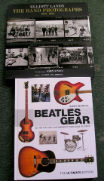
Home |
ELLIOTT LANDY - THE BAND PHOTOGRAPHS 1968-1969 BOOK
ANDY BABIUK - BEATLES GEAR, THE ULTIMATE EDITION BOOK
(Books from Halleonard Books )
After a chance encounter at a Dylan concert and some other interesting twists of fate chronicled in this delightful book, Elliott Landy was invited by Albert Grossman to Photograph The Band, his laid back, documentary style of working creating an intimate body of work that shows a hard working group of musicians with talent humour and a belief in what they were doing.
With over 150 beautiful photographs, plenty of anecdotes and technical information, this beautifully laid out, coffee table sized book is a must for anyone with an interest in The Band, the sixties or photography, each turning of the page revealing a new delight a new reason to smile.
With a mixture of relaxed, yet obviously posed shots, live images and candid moments, you feel that Elliott has managed to get right to the heart of the musicians, with the candid shots being perfectly observed allowing the skill of the photographer to shine through.
Highlights for me are Levon and Robbie sat around a kitchen table, Levon smoking a cigarette, the band sat on an abandoned sofa overlooking West Hollywood, all these beautifully printed in black and white, the simple style echoing the music the band produced. As the book moves forward colour film appears, the perfect choice for the live shots, most of which are head-shots with one colour backgrounds, an incredibly effective way of working, creating images that can be looked at over and over again. At the end of the book there is also a small section of infra-red photographs, the technique giving them a psychedelic hue that is beautiful, the shot of the band outside, sat on rugs, with a cat behind them being an absolute masterpiece.
With commentary by John Simon and edited by Rachel Ana Dobken, this book is the perfect Sunday afternoon treat, just spin some of their music and allow yourself to drift back in time.
Originally published in 2001, the incredibly engrossing "Beatles Gear" book has now been expanded to include over 600 new photos, extra stories and plenty of updates, making it the most comprehensive book about the gear The Beatles used on tour and in the studio. Clocking in at over 500 pages means this is a weighty tome, its chronological order giving a sense of narrative that is very effective, starting from the humble guitars that the musicians began learning with, the instruments they had as The Quarrymen, the one Auntie Mimi paid for etc, and moving right up to the final days chronicling George Harrison's attempts to recover a stolen guitar in the early seventies.
Whilst this may all seem a bit geeky to the non musician, this book is also a social history, we see technology develop, we see the changing fashions of the musicians themselves, all of which is fascinating if you have an interest in sixties culture, the whole very readable and containing plenty of quotes from the moptops themselves.
One thing that becomes clear is that Ringo kept the same set up for the entire career of the band, something which I find very refreshing, even his attempt to find a physically bigger kit backfired as “he could not get his leg around the snare”, brilliant.
Whilst you are unlikely to read this book in one sitting it is easy to dip in and out of, each visit bringing up a new fact, another photograph, something else to enjoy.
So, two hefty hardbacks of great quality, put them on your birthday list and enjoy. (Simon Lewis) |
| |
|
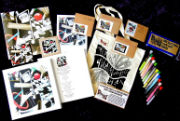
Home |
THE CHEMISTRY SET - THE ENDLESS MORE AND MORE
(LP/CD from Fruits de Mer )
Originally released in January and reviewed by Andrew Young this amazing psych album sold out within two days, prompting Fruits De Mer to release 200 CD's of the album which also sold out quickly. Now the label have released it again on double silver vinyl or as a double CD, the bonus discs containing three versions of “Love or Confusion” (Hendrix) whilst there are various goodies included such as postcards, space dust and other ephemera. You could also order the very special version that comes packed like an old style chemistry set, complete with test tubes, signed posters and the like. I believe the silver version is already sold out, so if you fancy the other versions speed is of the essence.
So, onto the bonus music, three version of the same song totalling 32 minutes with the band floating through a great Psychedelic cover of the tune to begin, jangling guitar shining through, sitar and tabla adding a sweet Eastern sheen, a flute swaying over the top the whole thing relaxed and suitably trippy. De-constructing the track completely the “Set the Controls for the Heart of the Laboratory” mix courtesy of Swordfish (Astralasia) is an ambient dub affair stretching the track out to 22 minutes using echoes, synths and studio trickery. Halfway through pulsing sequences give the music some rhythmic energy, the tablas emerging from the ambient mist the music building slowly but surely, swirling ghostly vocals and the sitar entwining around each other beautifully. To end, the “Dazed and Confused Disco” mix will divide the crowd, a hypnotic electronic beat and sequences used a a base for the vocals, the instruments looped in and out to create a whole new version of the song. Whether you enjoy it or not seems completely linked to your enjoyment of electronic dance music, the sound much closer to bands such as The Grid than Hendrix. Overall, an interesting listening experience that serves well as a playful extra to the main event. (Simon Lewis) |
| |
|
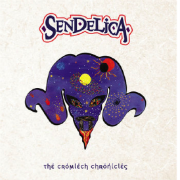
Home |
SENDELICA – CROMLECH CHRONICLES (LP from Fruits de Mer www.fruitsdemerrecords.com)
West Wales’ finest celebrate ten years of (un)togetherness with the release of this new album, recorded live in the studio back in the summer of 2015. The side-long “The Cromlech Suite” is precisely what we’ve come to love and expect from Pete Bingham and co, 23 minutes of sumptuous psych grooves pitched somewhere between Gong’s more floaty and uplifting moments and Eternal Tapestry at their fluid and languid best, interspersed with some tasty up-tempo cosmic boogie that still owes slightly more to flying teapots than silver machines.
The flip side features a rare cover, an excerpt of “Satori” by Flower Travellin’ Band, a dramatic slice of what ought to TV theme tune heaven but of course never was. Bingham’s guitar trades off Lee Relf’s tenor sax and vice-versa to the extent that the hairs on my arms are bristling as I type (the ones that cover the palms of my hands are behaving themselves, honest). “Vellichor” is rather too lush and loungy for my liking, but thankfully “Zenosyne” restores the natural order, a near eastern, not to mention near perfect, sensuous stumble through the souks, fleshpots and hash dens, if not of Cardigan then some far off place in one’s imagination. The introduction of violin also gives the welcome impression of a loping, instumental “Hassan I Sabbah”.
They’ll be doing it to you on the festival circuit again this summer (14th Dream, Surplus Festival, Kozfest etc) and it would be highly remiss of you not to see them at least once. Dr’s orders, Sardonicus or otherwise.
(Ian Fraser)
|
| |
|
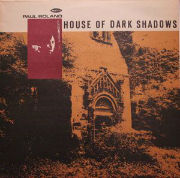
Home |
PAUL ROLAND - HOUSE OF DARK SHADOWS
(CD from Klang Galerie )
Originally released in 1995 and heavily featured in the Terrascope at the time (issue 18 or thereabouts – Ed.), this album collects together early tracks and singles with this new version adding five previously unreleased tunes, the whole remastered so that it sounds crystal clear with every nuance of the music revealed.
Opening with a fantastic Gothic organ sound, “Blades of Battenberg” soon reveals itself to be a chugging psych tune with plenty of noisy guitar and a great keyboard solo in the middle. With a strange, gloomy atmosphere and ghostly violin “Burnt Orchids” is a weird gothic tale, whilst “Madelaine” is a tale of madness that is one of my favourite tunes on the collection, complete with backward guitar and excellent lyrics.
Keeping the disquieting psych quota high, “The Puppet Master” is a classic Roland song,a dark story beautifully told, the music creating just the right atmosphere for the words, whilst “Cairo” adds that classic Eastern tinge to proceedings with some wonderful percussion providing the beating heart to the track, the icing on the cake a fine middle eight that is atmospheric and delightful on the ear.
To round off the original album, Ghost Ships” has drifting keyboards that cloak themselves around the words both parts working in harmony to create a sad and desolate tune that is also very beautiful.
As mentioned this album also contains five previously unreleased songs with “Midwych” being a sombre almost folk tune with a deliberately disjointed feel, the instrumentation sparse yet very effective. On “Shiloh” simplicity is the key, a simple melody and strummed guitar creating a sweet summery vibe, something not often found on Mr Roland's work, the mood becoming more familiar on the darker “Versailles”, the tune a Baroque dirge with droning violin and more excellent lyrics. Equally creepy, “Count Magnus”, is a gem of a song with a hypnotic guitar that creeps into your head and whispered lyrics, the instrumentation again sparse yet perfect for building the tension. Finally, “Summer of 1910” is a tale of impending war, with a nagging drumbeat and softly flowing flute, the two sounds creating a strange tension in the music, the lyrics poetic and wistful, the tune suddenly ending with a final chord then silence.
Worth it for the bonus tracks alone, this is an excellent collection of songs that have stood the test of time, a testament to the quality of the writing. (Simon Lewis)
|
| |
|
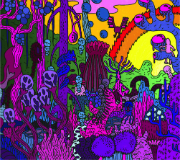
Home |
BLACK TEMPEST – ENFOLDING LIGHT (CD from http://www.noiseweb.co.uk/)
It’s no secret that we hold Stephen Bradbury, aka Black Tempest, in high regard here at the Terrascope and the man who provides the lead-off track for our current compilation LP Paper Leaves (the appropriately titled “Terrascopula Tempestua”) has certainly done his credentials no harm whatsoever with this latest release.
A companion piece to “Darkness Unfolding” released as a cover disc with the acclaimed Optical Sounds magazine in 2015, “Enfolding Light” is less dense and more optimistic sounding than its sibling. Sure this is electronica and it will appeal to those who may have cut their synthetic teeth on the sounds of Froese, Schultz and Blake back in the day. It also possesses an ambience born not of its pastoral roots and meditative quality. Bradbury is nothing if not a master of organic synthesis, for which we give thanks.
Anyone on nodding terms with Steve will also know that he is heavily into yoga and this spiritual quest manifests itself in his music, which here is serene and, to all external appearances, effortless. The first of three sequentially numbered “Transmissions” starts ominously enough with its whispered opening bars before the light seeps through incrementally. Oscillating synths supplemented by understated use of conventional instrumentation and the singular strains of temple bells complement one another beautifully before hypnotic repetition brings us safely to earth following a long descent. The second “Transmission” awakens with what sounds like a call to prayer before those gently pulsating synths kick in, where-after the low register rumble and a gossamer light melody line play either side of the central, repetitive rhythm. Cosmic, or should that kosmische? In contrast, “Transmission III” has the air of an old-school electro mash-up which gladdens the heart and quickens the pulse. It’s the nearest we come to pop-tastic teen appeal (that’s if the teens had been around the better clubs and festivals in the 90s – think Orb on uppers and you’re not far wide of the bullseye).
Aside from the Transmissions we are treated to “Cosmonaut” and “Light Into Darkness” the latter a wonderfully blissed out sliver of psychedelic pop complete with a dreamy and ever so slightly indistinct vocal, which underlines that there is much more to Black Tempest than what we old ‘uns used to refer to as “wee-boing” music. In fact on this evidence and that of Steve’s cover of Spirit’s “Nature’s Way” for Fruits de Mer a couple of years back, a more “conventional” psychedelic album from Black Tempest makes for a tantalising and most welcome prospect.
(Ian Fraser)
|
| |
|
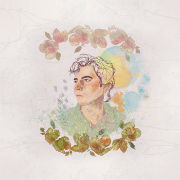
Home |
WILDER ADKINS - HOPE AND SORROW
CD/DL from Bandcamp
So often a personal thing, one man's favourite singer/songwriter is another man's dirge-ridden, depressing cliché, but I bet we all have them lurking somewhere in our collection, those songs that seem to speak directly to us and our emotions. Well, for me this one hits the spot beautifully, the music delicate and gently flowing whilst the lyrics are suitably, wistful, melancholic with hope and sorrow in equal measure.
Opening with a soft falling of guitar notes that could grace a John Martyn album, “Dreamer” sets the tone, gently strummed guitar, bass and percussion all topped with a voice that is sweet and vulnerable, Wilder displaying some assured guitar flourishes throughout this and every other tune on the album. Tantalising and breathless, “Gentle Woman” floats on a delightful guitar pattern and sparse percussion, some lovely harmony vocals and aching strings adding plenty of emotion and depth to the tune.
Sounding more like a slice of mellow Americana, “Bright and Beautiful” rocks out in a laid back way before “Cherry Blossoms” takes on a country flavour, sweet and sour and very tasty. Quite possibly the finest tune on the collection, the title track is just wonderful, the vocal harmonies dissolving like tears around the soft melodies and sparkling guitar, the voice having a slight Banhart twang, the whole a tribute to the writer.
Over twelve songs this album barely puts a foot wrong with “When I Am Married” being a delightful, but realistic, love song, whilst “Our Love Is A garden” has droning strings at its heart, another song that offers a glimmer of hope and is all the better for it. Finally, “Wrestle” bring it all home with a distorted electric guitar, the song possessing a lo-fi charm to it, a beautiful tune with interesting percussive patterns and a hook to die for.
A personal thing maybe, but it is hard to ignore the quality of this album nor its emotional pull, file under “warm nostalgic favourite” and enjoy. (Simon Lewis) |
| |
|
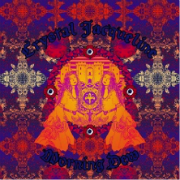
Home |
CRYSTAL JACQUELINE – MORNING DEW (7in single from Fruits de Mer www.fruitsdemerrecords.com)
I can’t say I was particularly thrilled to be facing down yet another version of Bonny Dobson’s “Morning Due”, having grown up with the Dead’s typically elastic interpretation and endured with good grace countless others, notably, Bob Plant’s from some years back. It’s some achievement then, that Crystal Jacqueline, aided and abetted by musical and life partner Icarus Peel, manages to breathe fresh life into what can in the wrong hands be a bit of a tired and clichéd old standard.
A spoken word intro over a jangling guitar lays the suitably dreamy foundation before the song opens out to us like a radiant bloom. Jacqueline possess one of the best voices on the scene at the moment and when she and the band opens up you can be forgiven for thinking that this were Jefferson Airplane on an extended UK sabbatical and with a much sweeter Grace. Equally tasteful and adept covers of Joe Byrd’s “Moonsong: Pelog” and another oft-covered (with varying success) composition “Sally Go Round The Roses” make up the undercard together with a perfectly delightful and wonderfully strange original by Peel “Ivy”, in some respects the highlight of a hugely impressive and well-crafted EP, which incidentally has been cut at 33rpm so as to fit 16 minutes of magnificent music onto one 7” single.
(Ian Fraser)
|
| |
|
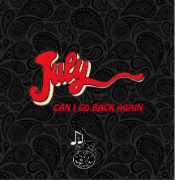
Home |
JULY – CAN I GO BACK AGAIN
(7in single from Fruits de Mer www.fruitsdemerrecords.com)
Ignored at the time, July’s meagre canon has, in the intervening 48 or so years benefited from critical evaluation so that their debut album (original copies of which are as rare as proverbial rocking horse droppings and fetch squillions at auction) is now considered something of a classic from that first psychedelic era.
Taken from their new album Resurrection, their first since that eponymous 1968 debut, “Can I Go Back Again” is a wistful or perhaps tongue in cheek yearning to travel back and do it all again. To say it could have been a lot worse would be damning it with faint praise, and that would be doing it an injustice. A number of borrowed hooks, lines (good job this isn’t a folk review otherwise we could be talking reels as well) and song titles lend a pleasingly nostalgic air to proceedings, but it’s all underpinned by a strong, vaguely eastern sounding riff which suggests that these guys are not only having fun but could still have something to offer in the here and now (hey that’s another old band, isn’t it?).
(Ian Fraser)
|
| |
|
| |
|
|
 |
|

